Welcome to our free classical music site

Do you write about classical music? Are you a blogger? Want to team up with Classical Connect? Send us a message, let's talk!

Do you write about classical music? Are you a blogger? Want to team up with Classical Connect? Send us a message, let's talk!
January 14, 2019. Russian festival. Three Russian composers were born this week, all in the 19th century. None of them rose to the level of “greatness,” but all were individually interesting and significant in the history of the Russian music. The oldest, César Cui, was born on January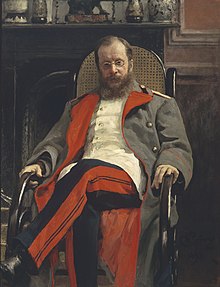 18th of 1835. His father was an officer in Napoleon’s army, stayed in Russia after the defeat and married a Lithuanian. César was born in Vilnius. He studied engineering in St.Petersburg and eventually became a noted expert in military fortifications. He had studied music since childhood but never professionally and became serious about it only after meeting Balakirev in St.-Petersburg in 1856. Through Balakirev, Cui became friends with the rest of the “Mighty Five,” Borodin, Mussorgsky and Rimsky-Korsakov. It’s interesting to note this moment in the development of Russian classical music. It had a rather precise beginning, in 1836, when Glinka’s opera A Life for the Tzar was premiered. Of course, the Russian elite was familiar with the European music through travel and local performances by Western musicians, but Russian music composed prior to that time was Italianate and not very original. Thus we can say that in 1856, when the Mighty Five came together, Russian music was just 20 years old. Cui was probably the least interesting of the group, but he wrote several operas, a number of orchestral pieces (though no symphonies), some chamber music and many art songs. Here’s one of Cui’s orchestral pieces, Tarantella. Ondrej Lenárd leads the Slovak State Symphony Orchestra.
18th of 1835. His father was an officer in Napoleon’s army, stayed in Russia after the defeat and married a Lithuanian. César was born in Vilnius. He studied engineering in St.Petersburg and eventually became a noted expert in military fortifications. He had studied music since childhood but never professionally and became serious about it only after meeting Balakirev in St.-Petersburg in 1856. Through Balakirev, Cui became friends with the rest of the “Mighty Five,” Borodin, Mussorgsky and Rimsky-Korsakov. It’s interesting to note this moment in the development of Russian classical music. It had a rather precise beginning, in 1836, when Glinka’s opera A Life for the Tzar was premiered. Of course, the Russian elite was familiar with the European music through travel and local performances by Western musicians, but Russian music composed prior to that time was Italianate and not very original. Thus we can say that in 1856, when the Mighty Five came together, Russian music was just 20 years old. Cui was probably the least interesting of the group, but he wrote several operas, a number of orchestral pieces (though no symphonies), some chamber music and many art songs. Here’s one of Cui’s orchestral pieces, Tarantella. Ondrej Lenárd leads the Slovak State Symphony Orchestra.
Vasily Kalinnikov, another Russian whose music is not well known in the West, was born on January 13th of 1966. Born in the Oryol province, he studied in a seminary where he also took music lessons. He attended the preparatory classes at the Moscow conservatory but couldn’t afford to study there full time. A music critic mentioned Kalinnikov to Tchaikovsky, who recommended that Maly Theater hires him as conductor; that position provided Kalinnikov with a steady income. Kalinnikov worked in the style broadly following The Five and Tchaikovsky’s. His First Symphony is regularly performed both in Russia and the West. In 1893 Kalinnikov contracted tuberculosis and moved to Crimea, where the climate was better; and continued to compose but died two days shy of his 35th birthday. Kalinnikov wrote some interesting church music. Here’s his Cherubic Hymn performed by the choir of Moscow Patriarchy under the direction of Hieromonk Amvrosiy.
Alexander Tcherepnin was born on January 20th of 1899 in St.Petersburg. His father, also a composer, was a pupil of Rimsky-Korsakov; Lyadov, Cui, Stravinsky and Prokofiev were friends of the family. Tcherepnin composed from an early age; by the time of the Revolution of 1917, when his family fled St.Petersburg to Tbilisi, Georgia, he had written about 200 small-scale pieces. In 1921 the family moved to Paris where Tcherepnin lived till 1949, when he moved to Chicago to teach at DePaul University. He became a US citizen in 1958. Techerepnin retired in 1964 and moved to New York. He died in Paris on September 29th of 1977 of a heart attack. His early compositions were influenced by Prokofiev, he later wrote many pieces in pentatonic scale. Here’s his Cello sonata no. 1 from 1929. The cellist is Alexander Ivashkin with Geoffrey Tozer on the piano.
And speaking of Russia, Mischa Elman, one of the most prominent violinists of the 20th century, was born on January 20th of 1891 in Talnoe, a mostly Jewish town in central Ukraine (then part of the Russian empire). Permalink
January 7, 2019. Poulenc and two string masters. One of the most interesting French composers of the 20th century, Francis Poulenc was born on this day in 1899. Poulenc’s also one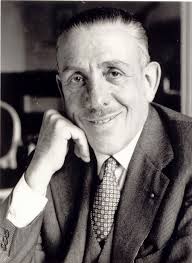 of the more popular composers on our site (there are about 90 of his recording in our library) and we’ve written about him a number of times (here is an entry from a couple of years ago). To celebrate Poulenc’s 120th birthday, here is his longest (about 23 minutes) piano piece, a suite called Les soirées de Nazelles. Nazelles is a small town on the Loire river not far from Tours where Poulenc vacationed in the 1930s. The suite consists of a Préambule, eight variations, Cadence and Final. It’s performed by the French pianist Pascal Rogé.
of the more popular composers on our site (there are about 90 of his recording in our library) and we’ve written about him a number of times (here is an entry from a couple of years ago). To celebrate Poulenc’s 120th birthday, here is his longest (about 23 minutes) piano piece, a suite called Les soirées de Nazelles. Nazelles is a small town on the Loire river not far from Tours where Poulenc vacationed in the 1930s. The suite consists of a Préambule, eight variations, Cadence and Final. It’s performed by the French pianist Pascal Rogé.
Two masters of string instruments, both Jewish and both born in what used to be the Russian Empire and the Soviet Union, were born this week: Nathan Milstein and Daniil Shafran. Milstein, one of the greatest violinists of the 20th century, was born in Odessa on January 13th of 1904. He studied with the best teachers: first, with Pyotr Stolyarsky in Odessa, then with Leopold Auer at the St.-Petersburg conservatory and later – with Eugène Ysaÿe in Belgium. In 1921 he met Vladimir Horovitz, three months his elder and already famous, and they became good friends. In 1925 they went on a concert tour of Western Europe and decided to stay abroad. Milstein performed in the US for the first time in 1929 and settled in the country thereafter. As the musicologist Boris Schwartz writes, Milstein was probably the least Russian of the talented Russian violinists who emigrated to the West at that time (Jascha Heifetz, Efrem Zimbalist, and Mischa Elman among them) because “his violinistic instincts were so controlled by intellect” (one may think that Heifetz was at least as intellectual). Milstein’s technique was phenomenal, but he never showed it off. He played well into his 80s: his last recording was of a Stockholm concert in 1986, when Milstein was 83. He died in London on December 21st of 1992. Here’s the 1959 recording of Vivaldi Violin Sonata No. 2 in A major, Op. 2, RV 31. Nathan Milstein is accompanied by the pianist Leon Pommers.
The remarkable Soviet cellist Daniil Shafran was also born on January 13th but 19 years after Milstein, in 1923. By then the Russian Empire was no more, it was the Soviet Union in the making and St.Petersburg held the name Petrograd, soon to be renamed yet again into Leningrad – which was Shafran’s city of birth. His father was the principal cellist of the Leningrad Symphony Orchestra and Daniil’s first teacher. Later Shafran studied at the Leningrad conservatory. As different as the fates of our two musicians are, there is a musical link between Shafran and Milstein: at the conservatory, Shafran studied with Alexander Shtrimer, who studied quartet playing in the class of Leopold Auer, Milstein’s teacher. At the age of 14, Daniil won the All-Union Competition of Violinists and Cellists. In 1949 he shared with Mstislav Rostropovich the first prize in Budapest, at the World Youth Festival competition. One year later, it happened again: Shafran and Rostropovich shared the first prize, this time in Prague at the Hanuš Wihan international competition (Hanuš Wihan, b. 1855 d. 1920, was a Czech cellist, considered one of the greatest of his time). For many years after, Shafran and Rostropovich were considered the top Soviet cellists, even though Rastropovich had a much bigger and more famous international career (Shafran also played in the West: he made his US debut in 1960 and played in the UK in 1964). Shafran had a very broad repertory, from Bach, Beethoven and Brahms to Debussy and composers of the 20th century, especially Prokofiev and Shostakovich. Here is Bach’s Cello Suite no. 1 in G major, BWV 1007. It was recorded in 1970.Permalink
December 31, 2018. Christmas Oratorio, three pianists, three Russian composers. We wish a very happy New Year to all our friends, listeners and readers! We often celebrate the New Year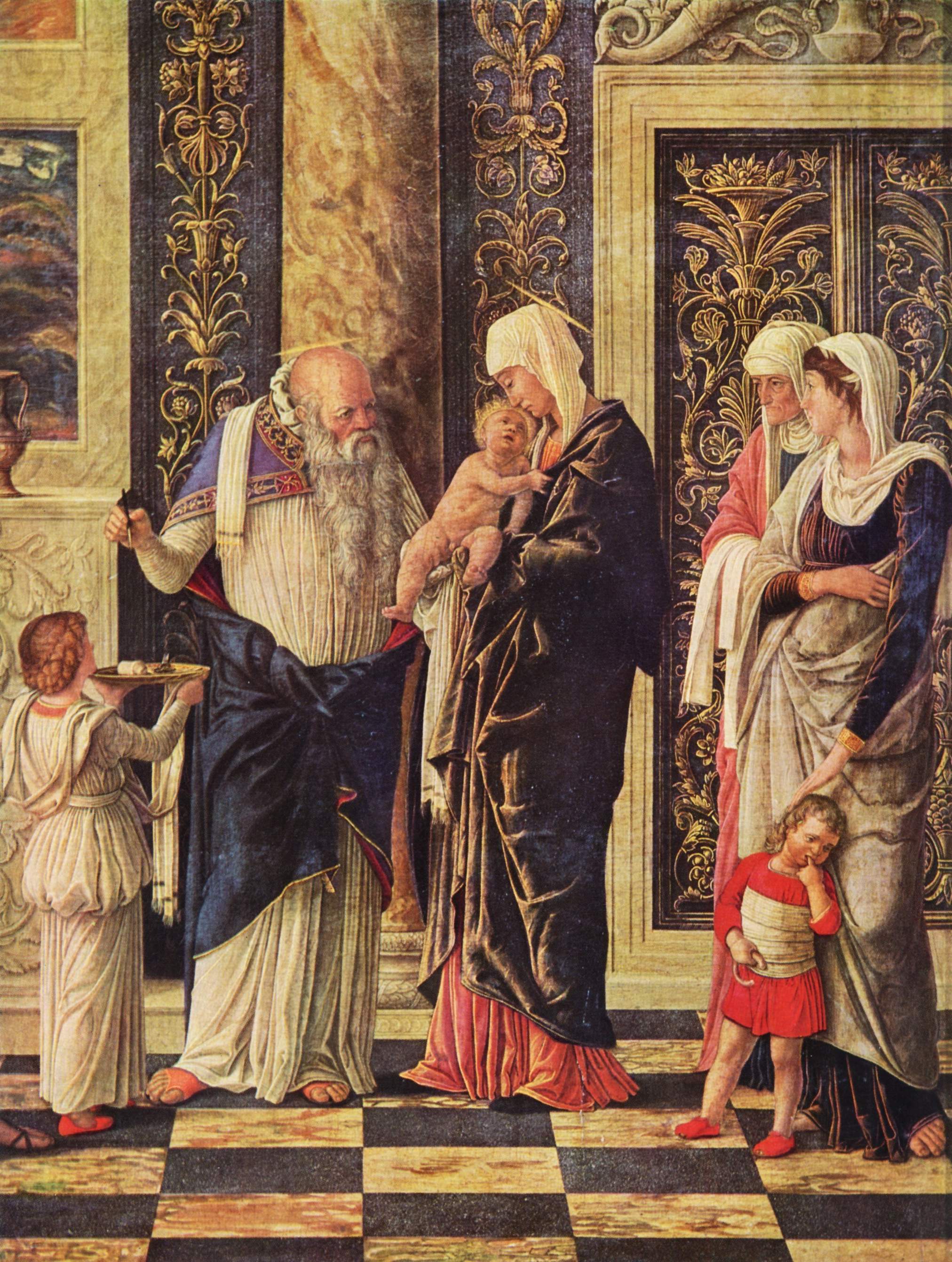 by playing a section of Bach’s Christmas Oratorio: it was written (or rather compiled – please see a wonderful article “Bach the recycler” in the New York Review of Books) for the Christmas season, which starts on December 25th and lasts for 12 days. Part IV of the Oratorio (there are six parts altogether) was written for the Feast of the Circumcision of Christ. According to Genesis 17:12, Jewish baby boys should be circumcised on the eighth day, therefore the Feast falls on the eighth day after December 25th, or January 1st. On its premier in the winter of 1734-35, Part IV was performed, on January 1st of 1735, first at Leipzig’s St. Thomas Church in the morning, and then at St. Nicholas Church in the afternoon. As we mentioned above, Bach recycled much of his own previously) written music into the Oratorio. Part IV was taken mostly from the secular Cantata BWV 213 Laßt uns sorgen, laßt uns wachen (Let us tend him, let us watch him) which is usually called Hercules at the Crossroads, as it describes the contest of Vice and Virtue over Hercules’s destiny. It’s rather amusing that Bach took a secular cantata, which he had composed five years earlier for the 11th birthday of Crown Prince Friedrich Christian of Saxony, as the basis for a piece of church music describing the circumcision of the Savior. While changing the recitatives, he used the music of all main choruses and arias with minimal adjustments. Thus, the polytheistic chorus “Let us tend him [Hercules], let us watch him, This our charge, the gods' own son” sung by the gods in the “Hercules” cantata becomes a very proper “With gratitude, with praise, fall before the Almighty's throne of grace!” in the Christmas Oratorio. The wonderful “echo” aria of the Hercules cantata, which starts with “Faithful Echo of these places, …” becomes the “O my Savior, does your name…” in the Oratorio, still retaining all the echo effects of the original. Somehow, it all works, both in the secular cantata as well as in the Christmas Oratorio.
by playing a section of Bach’s Christmas Oratorio: it was written (or rather compiled – please see a wonderful article “Bach the recycler” in the New York Review of Books) for the Christmas season, which starts on December 25th and lasts for 12 days. Part IV of the Oratorio (there are six parts altogether) was written for the Feast of the Circumcision of Christ. According to Genesis 17:12, Jewish baby boys should be circumcised on the eighth day, therefore the Feast falls on the eighth day after December 25th, or January 1st. On its premier in the winter of 1734-35, Part IV was performed, on January 1st of 1735, first at Leipzig’s St. Thomas Church in the morning, and then at St. Nicholas Church in the afternoon. As we mentioned above, Bach recycled much of his own previously) written music into the Oratorio. Part IV was taken mostly from the secular Cantata BWV 213 Laßt uns sorgen, laßt uns wachen (Let us tend him, let us watch him) which is usually called Hercules at the Crossroads, as it describes the contest of Vice and Virtue over Hercules’s destiny. It’s rather amusing that Bach took a secular cantata, which he had composed five years earlier for the 11th birthday of Crown Prince Friedrich Christian of Saxony, as the basis for a piece of church music describing the circumcision of the Savior. While changing the recitatives, he used the music of all main choruses and arias with minimal adjustments. Thus, the polytheistic chorus “Let us tend him [Hercules], let us watch him, This our charge, the gods' own son” sung by the gods in the “Hercules” cantata becomes a very proper “With gratitude, with praise, fall before the Almighty's throne of grace!” in the Christmas Oratorio. The wonderful “echo” aria of the Hercules cantata, which starts with “Faithful Echo of these places, …” becomes the “O my Savior, does your name…” in the Oratorio, still retaining all the echo effects of the original. Somehow, it all works, both in the secular cantata as well as in the Christmas Oratorio.
We had already played (here) the introductory chorus Fallt mit Danken, fallt mit Loben (With gratitude, with praise) from Part IV, so now we’ll play the rest of it, starting with the recitative Und da acht Tage um waren (And when eight days had passed) and ending with the Chorale Jesus richte mein Beginnen (May Jesus order my beginning). As in all previous excerpts, John Eliot Gardiner conducts Monteverdi Choir and the English Baroque Soloists (here).
Also this week, we celebrate anniversaries of three great pianists of the 20th century: Alfred Brendel, Arturo Benedetti Michelangeli, and Maurizio Pollini. We wrote about them last year, so please take a look here. Three Russian composers were also born this week, Mily Balakirev, Nikolai Medtner and Alexander Scriabin, but we’ll find time for them later.
See you in 2019!Permalink
December 24, 2018. Christmas music of the Renaissance. Christmas is around the corner, and at this time of the year we usually try to kill two birds with one stone: celebrate this feast and commemorate some of the musicians whom we failed to mention during the previous 12 months.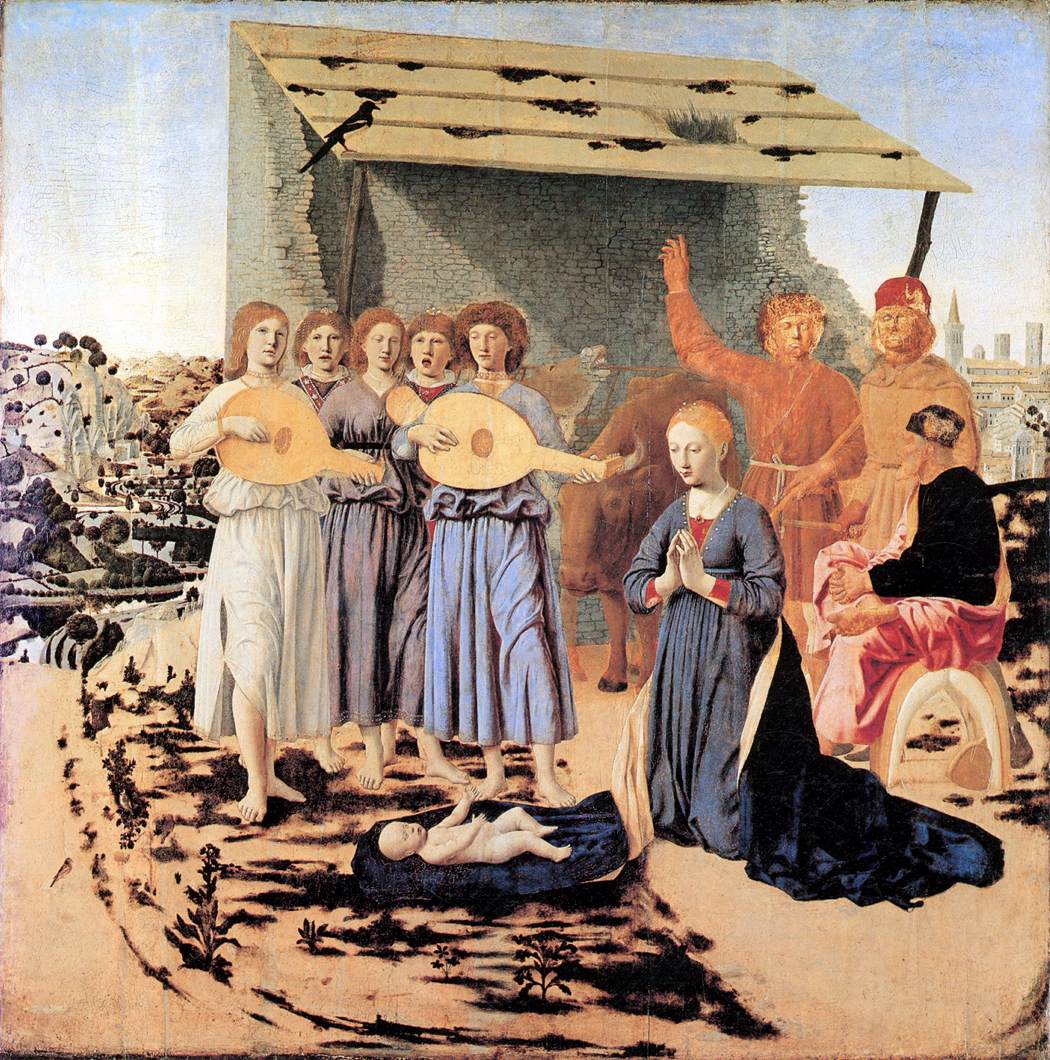 Very often those are the composers of the Renaissance, whose birthdays we don’t know. So here is to Christmas and to three great composers, Orlando di Lasso, Giovanni Pierluigi da Palestrina and Tomás Luis de Victoria.
Very often those are the composers of the Renaissance, whose birthdays we don’t know. So here is to Christmas and to three great composers, Orlando di Lasso, Giovanni Pierluigi da Palestrina and Tomás Luis de Victoria.
Giovanni Pierluigi da Palestrina, whose name derives from the name of a small town near Rome, was born in Palestrina sometime between February 3rd of 1525 and Feb 2nd of 1526. Palestrina moved to Rome in 1551 when Pope Julius III appointed him maestro di cappella at the Cappella Giulia, the second (after Cappella Sistina) most important choir of the Vatican. We should remember that prior to Palestrina, the music world of Rome was dominated by the Flemish-French and Spanish composers: Guillaume Dufay, Josquin des Prez, Cristóbal de Morales and their followers. Palestrina was the first important composer to be born in Italy and the first one to gain European fame. After working for several years for the Pope, he became the maestro di cappella of San Giovanni in Laterano, the cathedral church of Rome (the Lateran Basilica is the seat of the Pope, not St. Peter’s Basilica, as is often assumed). From 1561 to 1566 he served mostly at Santa Maria Maggiore, another major Roman church; in 1571 he returned to the Vatican, again in charge of the Cappella Giulia, and stayed there for the rest of his life (he died in Rome on Feb 2nd of 1594). It was during that period, around 1575, that he wrote a motet Hodie Christus natus est (Today Christ is born); he also wrote a mass by the same name, with the Kyrie section based on the motet. Here it is, performed by Harry Christophers’ ensemble The Sixteen.
Orlando di Lasso (or Orlande de Lassus) was born in 1530 or 1532 in the town of Mons in the County of Hainaut in what is now Belgium. He moved to Italy with Ferrante Gonzaga, a condottiero who was then serving the Holy Roman Emperor Charles V. After serving at several courts, Orlando moved to Rome, where, in 1553, he became maestro di cappella at San Giovanni in Laterano, a position eventually assumed by Palestrina. He didn’t stay in Rome for long; after traveling to several European countries he settled in Munich at the court of Albrecht V, Duke of Bavaria, and stayed there for the rest of his life. He died in Munich on June 14th of 1594, the same years a Palestrina. Orlando was enormously productive, writing 60 masses, 530 motets and much of secular music. One of his Christmas motets is Omnes de Saba (All of Sheba, bringing gold and frankincense). It was written in 1590. Here is it performed by the Choeur de chambre de Namur and Ricercar Consort under the direction of Peter Phillips.
The third composer, Tomás Luis de Victoria, was the youngest of the three: he was born around 1548 in the town of Sanchidrián near Ávila in Castile. He went to Rome in 1565; he most likely knew and might have studied with Palestrina. In 1573, Victoria was appointed Maestro di Capella at the Collegio Germanico and two years later – at Sant'Apollinare alle Terme, the church of the Collegio. Victoria returned to Spain in 1587 but went to Rome in 1594 to attend Palestrina’s funeral. Here, from 1572, is Victoria’s motet "O magnum mysterium,” (twenty years later he would use it to compose a mass “O magnum mysterium”). The motet was written for the Matins service of Christmas. It’s performed by Oxford Camerata, Jeremy Summerly conducting. Merry Christmas!Permalink
December 17, 2018. Les trois francophones. Last week we celebrated Beethoven’s birthday and promised to write later about three composers, who were also born that week. The three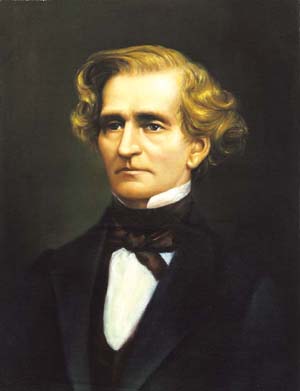 we’re referring to are Hector Berlioz, César Franck, and Olivier Messiaen. Two of them, Berlioz and Messaien, were French by birth; Franck was born in Liege, which is now in Belgium, but spent most of his adult life in Paris and eventually took French citizenship. Hector Berlioz was born on December 11th of 1803 in La Côte-Saint-André, a small town half way between Lyon and Grenoble. Berlioz is a unique figure in the history of European music. A Romantic composer, he didn’t have any musical predecessors, either in France or anywhere else, and didn’t leave any followers. During his lifetime, he wasn’t acknowledged as a musical talent in France and ended up mostly conducting (he was much better received in Germany and England). He wrote three operas: the first one, Benvenuto Cellini, had a terrible reception; his second, Les Troyens, was so long that it was never performed in France during his life; the third, Béatrice et Bénédict, was premiered in Germany and continued playing there for years, the first staging in Paris dates from 1890 – by then Berlioz had been dead for 21 years. These days Berlioz is recognized as one of the greatest composers of the 19th century. His symphonic masterpieces were acknowledged a long time ago, but even his operas, especially the astounding Les Troyens, are staged more often, despite all technical difficulties. Here’s the Overture to Berlioz’s Benvenuto Cellini, composed in 1858. Colin Davis conducts the BBC Symphony Orchestra.
we’re referring to are Hector Berlioz, César Franck, and Olivier Messiaen. Two of them, Berlioz and Messaien, were French by birth; Franck was born in Liege, which is now in Belgium, but spent most of his adult life in Paris and eventually took French citizenship. Hector Berlioz was born on December 11th of 1803 in La Côte-Saint-André, a small town half way between Lyon and Grenoble. Berlioz is a unique figure in the history of European music. A Romantic composer, he didn’t have any musical predecessors, either in France or anywhere else, and didn’t leave any followers. During his lifetime, he wasn’t acknowledged as a musical talent in France and ended up mostly conducting (he was much better received in Germany and England). He wrote three operas: the first one, Benvenuto Cellini, had a terrible reception; his second, Les Troyens, was so long that it was never performed in France during his life; the third, Béatrice et Bénédict, was premiered in Germany and continued playing there for years, the first staging in Paris dates from 1890 – by then Berlioz had been dead for 21 years. These days Berlioz is recognized as one of the greatest composers of the 19th century. His symphonic masterpieces were acknowledged a long time ago, but even his operas, especially the astounding Les Troyens, are staged more often, despite all technical difficulties. Here’s the Overture to Berlioz’s Benvenuto Cellini, composed in 1858. Colin Davis conducts the BBC Symphony Orchestra.
César Franck was born December 10th of 1822. He studied at the Royal Conservatory of Liège and later went to the Paris Conservatory, where he studied the organ and composition. He became a fine organist and was hired as the organist at the newly-built St. Clotilde church in the 7th arrondissement, with a great organ by Cavaillé-Coll. Franck played there from 1858 till his death in 1890. While he composed most of his adult life, it was only after he became established as the professor at the Paris Conservatory in 1872 that he could pursue composition seriously. Probably his best-known work is the Violin Sonata, composed in 1886, when Franck was 68. It’s one of the most popular pieces in the violin repertoire with literally hundreds of available recordings. Here’s one of them, made in 1968 by David Oistrakh and Sviatoslav Richter.
Olivier Messiaen, born on December 10th of 1908, 110 years ago, was one of the most important composers of the 20th century. We’ve written about him many times, for example here and here, but he clearly deserves another full entry, which we’ll try to do next year. Vingt Regards sur l'enfant-Jésus is one of Messiaen best (and best known) pieces for the piano. It is a long suite consisting of 20 pieces (the performance usually takes about two hours). We already have a number of excerpts in the library; here are two more, no. 3, L'échange, and no. 4, Regard de la Vierge. Both are played by Pierre-Laurent Aimard. Permalink
December 10, 2018. Beethoven. This second week of December almost always presents us with problems, and this is no exception. Early in the week we have three French (or, rather, French-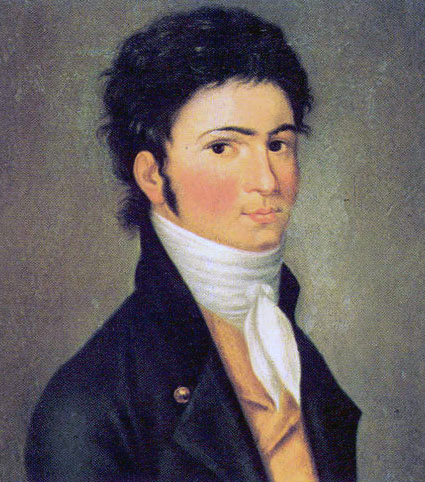 speaking) composers, and then, closer to the end, is Beethoven. We’ll write about César Franck, Hector Berlioz and Olivier Messiaen next week, as we cannot really skip over Beеthoven’s anniversary. Ludwig van Beethoven was born, we assume, on December 16th of 1770. Considering the time and place (the second half of the 18th century and Bonn, a small but important city, the seat of the Archdiocese of Cologne), it is strange that we don’t have a record of his birth; we only know that he was baptized on the 17th, which was usually done the next day after the birth of a child We’ve followed Beethoven’s life by his piano sonatas, an arbitrary choice but one that helps us concentrate on different periods of his life. Last year we stopped at his Sonata no. 10, Op. 14, written in 1798-1799. Sonata no. 11 was composed in 1800 and carries the opus number 22. Between these sonatas, Beethoven wrote six (!) string quartets, Piano concerto no. 1, published the Piano concerto no. 2, which was composed some five years earlier, and the First symphony. This incredibly productive period was not easy. On the one hand, by 1800 Beethoven became well established in Vienna, roundly acknowledged as the most talented composer since Mozart and Haydn; he had wealthy patrons, among them Prince Karl Alois Lichnowsky, a Chamberlain at the Imperial court and the former patron of Mozart, and Prince Lobkowitz, a major patron of Haydn. On the other hand, he was already developing severe hearing problems. It appears that the first episode happened as early as 1798, when Beethoven temporarily lost his hearing. Even after he recovered, he couldn’t get rid of the ringing in his ears, and his hearing was slowing declining.
speaking) composers, and then, closer to the end, is Beethoven. We’ll write about César Franck, Hector Berlioz and Olivier Messiaen next week, as we cannot really skip over Beеthoven’s anniversary. Ludwig van Beethoven was born, we assume, on December 16th of 1770. Considering the time and place (the second half of the 18th century and Bonn, a small but important city, the seat of the Archdiocese of Cologne), it is strange that we don’t have a record of his birth; we only know that he was baptized on the 17th, which was usually done the next day after the birth of a child We’ve followed Beethoven’s life by his piano sonatas, an arbitrary choice but one that helps us concentrate on different periods of his life. Last year we stopped at his Sonata no. 10, Op. 14, written in 1798-1799. Sonata no. 11 was composed in 1800 and carries the opus number 22. Between these sonatas, Beethoven wrote six (!) string quartets, Piano concerto no. 1, published the Piano concerto no. 2, which was composed some five years earlier, and the First symphony. This incredibly productive period was not easy. On the one hand, by 1800 Beethoven became well established in Vienna, roundly acknowledged as the most talented composer since Mozart and Haydn; he had wealthy patrons, among them Prince Karl Alois Lichnowsky, a Chamberlain at the Imperial court and the former patron of Mozart, and Prince Lobkowitz, a major patron of Haydn. On the other hand, he was already developing severe hearing problems. It appears that the first episode happened as early as 1798, when Beethoven temporarily lost his hearing. Even after he recovered, he couldn’t get rid of the ringing in his ears, and his hearing was slowing declining.
Beethoven was very proud of his Piano Sonata no. 11, op. 22, considering it his best up to that point, even if these day’s it’s not performed as often as some other piano sonatas, even from the same period. It’s a “grand” sonata, meaning that is has four, rather than three, movements: Allegro, Adagio, Menuetto, and Rondo: Alegretto. No. 11 is also the last of Beethoven’s classical sonatas, written in the style previously developed by Haydn and Mozart. Beethoven dedicated it to Count Johann Georg von Browne, a Russian officer of Irish descent, who moved to Vienna in 1794 and was one of Beethoven’s early patrons. The sonata is played here by Wilhelm Kempff, one of the greatest German pianists of the 20th century. This recording was made in 1965, when Kempff was 70.
Later in 1800, Beethoven started working on the next piano sonata, no. 12, which received opus number 26: in the interim, Beethoven composed two violin sonatas, one of which, no. 5, “Spring,” is a masterpiece, and a Serenade for Flute, Violin and Viola. Piano sonata no. 12 also has four movements and, unusually for a classical sonata, starts with an Andante, a slow movement representing a theme and variations. The theme is strikingly similar to the one Schubert used 27 years later in his Impromptu No. 2 in E-flat major. One wonders if it was an explicit homage or a subconscious borrowing. The third movement Maestoso andante, subtitled Marcia funebre sulla morte d'un eroe is a poignant funeral march. The sonata is performed by another great interpreter of the music of Beethoven, American pianist Richard Goode.Permalink